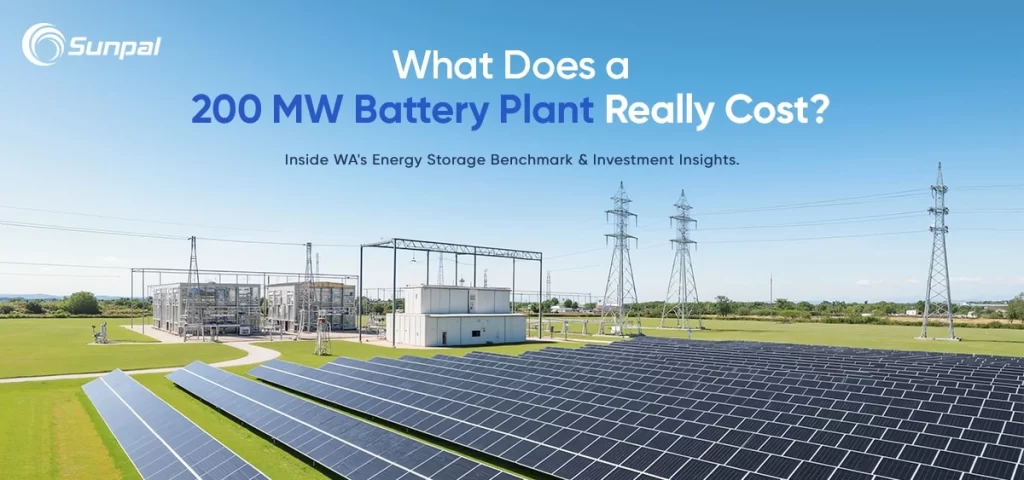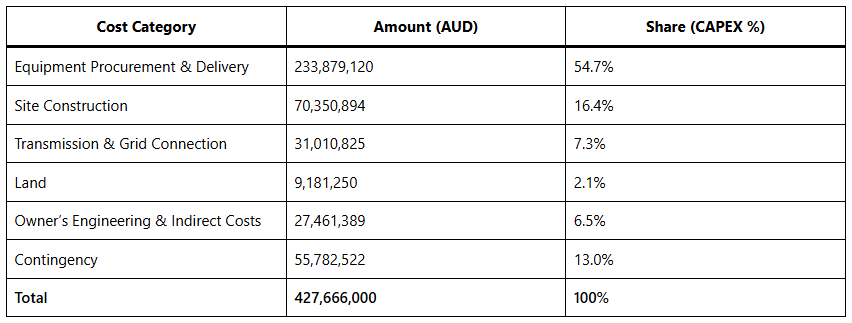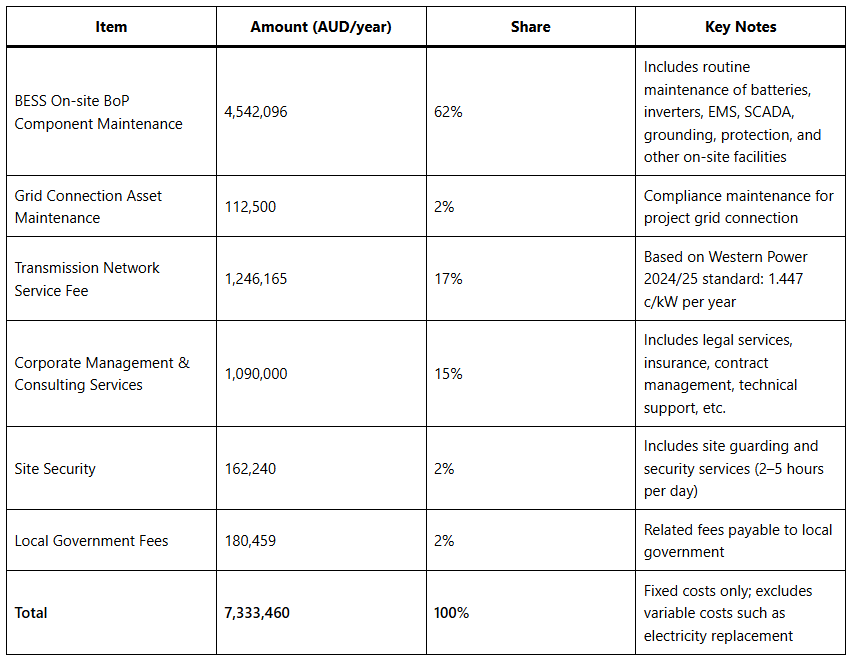
How much does it really cost to build a utility-scale battery energy storage system (BESS) in Australia? A newly released analysis from the Western Australian Economic Regulation Authority (ERA) sheds light on this question, offering a detailed cost benchmark for a 200 MW / 800 MWh standalone storage facility. The findings will serve as the foundation for the 2027/28 Benchmark Reserve Capacity Price (BRCP), a critical market signal that guides investment, financing, and capacity planning in the state's electricity market.
Why the BRCP Matters
Western Australia's electricity market, unlike the interconnected grids on the east coast, operates as an isolated system. To maintain stability and encourage new investment, the state relies on the Benchmark Reserve Capacity Price (BRCP).
The BRCP serves three central functions:
- Pricing reference point – Capacity payments are settled around the BRCP, adjusted for supply-demand dynamics.
- Investment visibility – Developers, financiers, and policymakers use the BRCP as a benchmark when evaluating new projects.
- Market signal – It provides a clear, predictable incentive for adding or maintaining system capacity.
Every year, the ERA commissions an independent engineering consultant to design a hypothetical power station and calculate its capital and operating costs. The outcome anchors the BRCP for the upcoming capacity cycle. For 2024, the consulting firm GHD was tasked with assessing the cost of a new BESS, offering a rare window into the economics of utility-scale storage.
Key Project Assumptions
The analysis is based on a 200 MW / 800 MWh standalone battery storage project, equivalent to four hours of storage capacity. The cost estimates are benchmarked to Q4 2024 pricing, with an accuracy tolerance of ±50%. Currency conversions were calculated at AUD:USD = 1.00:0.69 and AUD:EUR = 1.00:0.62.
Capital Expenditure (CAPEX) Breakdown
According to GHD's study, building such a facility in Western Australia would require a total upfront investment of AUD 428 million (≈ RMB 2.03 billion). The CAPEX covers equipment procurement, engineering, land, approvals, and contingency reserves.
CAPEX Overview

The contingency allocation stands out: at 15% of total costs, it reflects a deliberate choice to err on the side of overestimation, ensuring financial buffers for developers and investors.
Operating Expenditure (OPEX) Breakdown
Once operational, the battery planat would incur annual fixed OPEX of AUD 7.33 million (≈ RMB 34.8 million). These expenses cover routine maintenance, monitoring, compliance, and local taxes.
OPEX Overview

The bulk of operating expenses lies in equipment and systems maintenance, highlighting the technical complexity and long-term service requirements of large-scale batteries.
Why Are the Estimates So High?
Industry observers have noted that both CAPEX and OPEX estimates appear conservative, even inflated, compared with current market transactions. GHD's methodology reflects what many describe as a “cost-plus incentive” approach:
- Financial prudence – Higher cost assumptions create a cushion for developers, ensuring projects remain bankable even if actual costs exceed expectations.
- Policy alignment – A generous BRCP encourages new entrants and reassures financiers, critical in a relatively small and isolated market like Western Australia.
- Market stability – Overestimating costs reduces the risk of underinvestment in capacity, which could jeopardize grid reliability.
This conservative stance means the final BRCP may look “generous” compared with real-world project economics. Yet, for investors, this is precisely the point: predictable and stable returns are essential for mobilizing capital at scale.
International Comparison
To put the numbers in perspective, a 200 MW / 800 MWh project of similar size in the United States or Europe often reports total CAPEX in the range of USD 250–300 million. Australia's AUD 428 million estimate (≈ USD 295 million) falls within this bracket, albeit on the higher end once the contingency and indirect costs are included.
High costs for equipment procurement—particularly battery packs, power conversion systems (PCS), and balance-of-plant (BoP) components—drive much of this difference. Although global battery prices have declined in recent years, regional factors such as logistics, labor, and regulatory compliance inflate costs in Australia.
Market Implications
The release of the BRCP-linked cost analysis carries several implications for Australia's clean energy transition:
- Investor Confidence – A clear benchmark for storage costs lowers barriers to financing, enabling banks and private equity firms to back large projects.
- Pipeline Growth – Western Australia could see accelerated development of BESS projects, particularly as renewable penetration increases and grid stability becomes more complex.
- Technology Competition – While lithium-ion batteries dominate today, alternative storage technologies (such as flow batteries or hydrogen-based solutions) may challenge the assumptions underpinning BRCP in future cycles.
- Policy Signaling – A “generous” BRCP may be viewed as a deliberate policy tool to fast-track investment in critical infrastructure.
Looking Ahead
The 2027/28 BRCP will be finalized based on this cost assessment, guiding capacity payments for years to come. In the short term, the relatively high benchmark is expected to stimulate project development, providing developers with confidence to pursue new investments.
Over the medium to long term, however, several dynamics could reshape the landscape:
- Falling battery costs – As manufacturing scales and supply chains mature, the assumptions embedded in today's BRCP may look increasingly conservative.
- Regulatory adjustments – Policymakers may tighten benchmarks once storage becomes mainstream, reducing returns but maintaining reliability.
- Integration with renewables – As Australia pushes toward higher solar and wind penetration, large-scale storage will become a non-negotiable part of system planning.
Заключение
Building a 200 MW / 800 MWh battery energy storage system in Western Australia today comes with a price tag of AUD 428 million upfront and AUD 7.33 million annually in fixed operating costs. While these figures may appear inflated compared with global benchmarks, they serve an essential purpose: ensuring investment certainty in a market that depends on stable capacity signals.
For developers and investors, the ERA's report is more than just a cost calculation—it is a policy signal, a financing tool, and a market anchor. As the clean energy transition accelerates, Australia's approach to storage pricing could become a reference point for other jurisdictions balancing the twin imperatives of grid stability and investor confidence.
